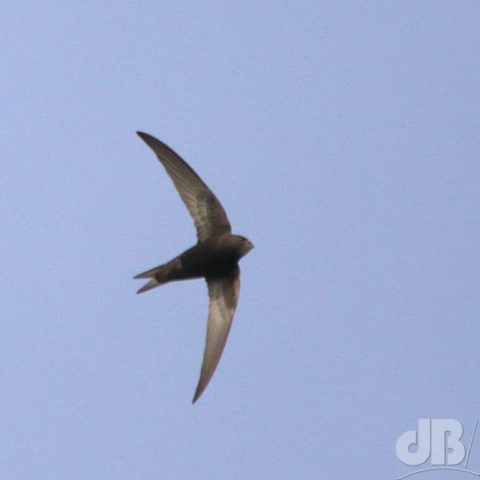It’s almost four years since Swift expert Dick Newell built some large-scale nestboxes for our parish amenities, namely Village Hall and Sports Pavilion. You will recall we had our local retained firefighters to hand to install them. The swifts have not yet taken to these nesting sites, although 2025 may well be the year they do. Lots of locals with boxes on their houses have seen swifts investigating over the last few days.

On the evening of the 29th April, I spotted the first two Swifts over our house. Always wonderful to know some have arrived safely from their winter homes in sub-Saharan Africa. This species needs our help though, too many natural nesting sites are being grubbed out for housing development and rarely a thought given to installing nest bricks in the houses at minimal inconvenience or cost. Without swift action, these beautiful migrant visitors to our shores may disappear from the summerscape altogether. Numbers have halved in the last thirty years!
Meanwhile, I was thinking about their arrival dates. These have usually been late April, we have good records going back to 1907 that corroborate this. Local birder Ian E shared his first sighting dates for the village for the last few years: 26/4/25, 27/4/24, 28/4/23, 30/4/22, 25/4/21. Their arrival times are remarkably consistent over this period and for several decades before. So, is climate change having no effect? However, the very first swift seen in Cambridgeshire this year was 16th April at RSPB Fen Drayton.
Well, of course in their wintering grounds temperatures may be a little higher on average than in previous years, but that shouldn’t really make much difference to when they set off to their summer, breeding grounds in the north. Presumably, they’re driven more by changes in the day length and their internal body-clock. Obviously, they don’t know anything in advance of arriving about how things might have changed in the temperate north.
They arrive at almost exactly the same time each year from Africa and if it’s a little warmer than they expect, then they presumably get a nice warm start to the breeding season. It has been almost 27 Celsius in our Cambridgeshire village today, which is ten degrees hotter than it was this time last year and the year before. It is climate change, although not generally the rising temperature trend, but perhaps one of the increasingly frequent anomalous weather burps.
Aerial lifestyle – Common Swifts spend up to 10 months a year in flight without landing. They eat, sleep, and even mate on the wing.
Flight speed – They can fly at over 100 kmh (about 60 mph) during level flight, making them among the fastest birds in level, flapping flight.
Flying sleep – Swifts can shut down one hemisphere of their brain at a time to get 40 winks…well 20 winks.
Migration – They breed in Europe and migrate to sub-Saharan Africa for the winter, covering tens of thousands of km annually.
Ground contact – Once they fledge, young swifts may not touch the ground again for 2–3 years until they nest for the first time.
Screech parties – During summer evenings, swifts gather in groups and fly at high speeds through city streets and over the countryside, emitting loud, piercing screams.
Lifespan – Despite their small size, swifts can live an unusually long life, over 20 years.
Sticky nests – They build nests in crevices using saliva as glue, often in old buildings, under tiles, or in cliffs, and of course in nest bricks and nest boxes.
Wing efficiency – Their long, crescent-shaped wings and short tails give them an efficient body design for gliding and manoeuvring.
Identity confusion – Though they resemble swallows and martins, with their forked tails and aerial antics, swifts are more closely related to the hummingbirds with whome they share a common ancestor. Features they share with the swallows and martins (the hirundines) is an example of convergent evolution.